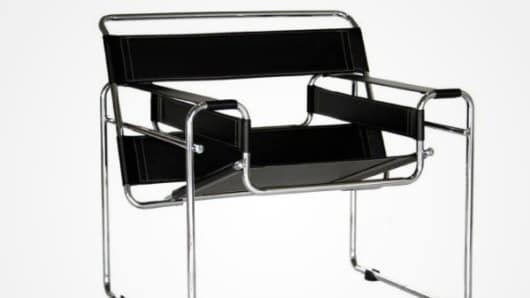The Wassily chair, one of several designs closely associated with the Bauhaus movement, was inspired by a bicycle. Its designer, Marcel Breuer (1902-1981), graduated from the Bauhaus carpentry workshop in 1924 and, like many of his colleagues, was interested in industrial materials and manufacturing techniques.
Breuer said he felt the bicycle (he rode an Adler) was a timeless piece of design, referring to its bent handlebars as "steel tubes like macaroni". Inspired by the bicycle frame, Breuer set out to create a design using steel tubing. "I realised the bending had to go further. It should only be bent, with no points of welding on it, so it could also be chromed in parts and put together."
(Read More: 10 Ways 3-D Printing Will Blow Your Mind )
"I was somewhat afraid of criticism. I didn't tell anyone I was doing these experiments actually," confessed Breuer.
The Model B3, as it was first known, was finished in 1924. The design was only possible because Mannesmann, a German steel manufacturer, had recently perfected the process of making seamless steel tubing. Before that, all steel tubing had a welded seam which collapsed as soon as it was bent.
Breuer has called the chair his "most extreme work ... the least artistic, the most logical, the least cosy and the most mechanical".
The first chairs were made by Thonet, specialists in bent wood, but the design never took off and was dropped. After the second world war, it was picked up by Italian manufacturer, Gavina, who changed the canvas seat to leather and, after learning that Breuer's friend, Wassily Kandinsky, had admired the prototype, changed the name in a canny piece of marketing. The production rights were acquired by Knoll, which continues to make the chair today, and recently reintroduced the canvas version.


